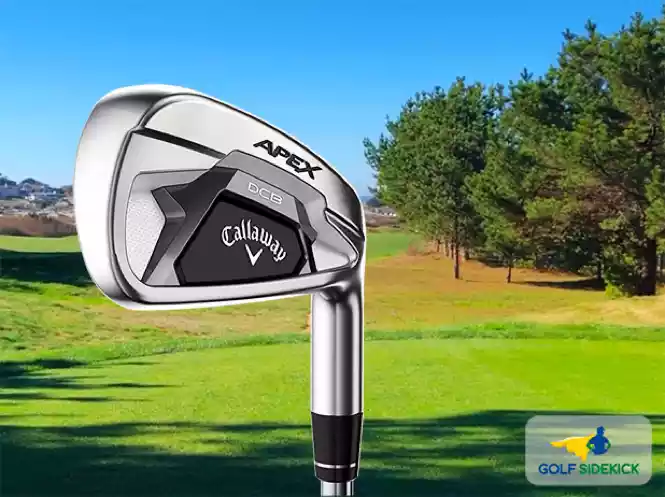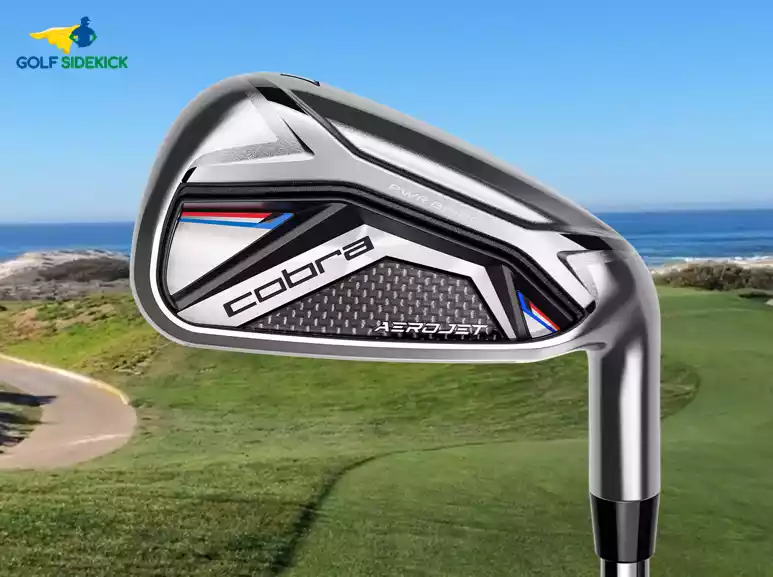Last Updated on February 2, 2024 by Matt Greene
*Read our review guidelines.
What are the best mid handicap irons? As a golfer, you know what looks good to you, and that is 80% of the decision.
Many specially engineered iron sets exist purely to help mid handicappers have more fun. To find the right one for you, please hold these factors in the front of you mind:
- Try testing your favorite 2-3 sets of irons by actually hitting them. Narrow down to the best one.
- Get fitted for the set of clubs that you like the most. You're a good golfer now, so you'll benefit from fitting.
- You have the option to come home and purchase your irons online with the exact same specs the fitter gave you!
In this review of the best irons for mid handicappers, we'll tell you our expert teams experience with the clubs on and off the course, and any other key information that you might not know, to help you make a better decision.
*This post contains affiliate links and we will be compensated if you buy after clicking on our links.
Best Irons for Mid Handicap Golfers 2024
Best overall irons for a mid handicapper
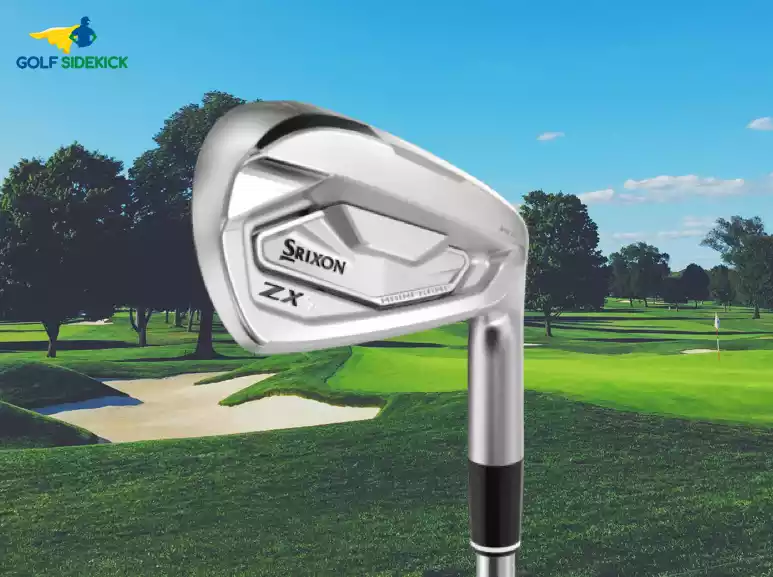
Srixon ZX5 Mk II irons
Easy to launch:
Distance:
Forgiveness:
The Srixon ZX5 MkII stood out after hitting them and playing them on the course. They are a decent upgrade from the ZX5 with much better looks but the same top of the line materials and feel.
Turf interaction: The sole of the club is shaped with a slight 'V' shape and that is what makes it a winner in my eyes. The interaction with the ground is the best I have found.
When you hit a shot, the leading edge of the ZX5 will first enter the grass and the bottom of the sole (the bottom of the V) will bounce off the turf beneath the ball. You can actually feel that small action as the club glides right through the turf instead of digging.
Looks and feel: At address, my eyes saw minimal offset and I found the top line was in the middle of the blade and super game improvement thickness. When I look at them in the bag, I can't tell if they are game improvement or players cavity back.
The clubs felt soft to me and that is because Srixon use some of the softest materials and forge almost all of their irons. Something to note is that there is a tungsten insert in the toe of the the 3 iron down to 7 iron while in the 8 iron down to approach wedge, the grooves are deeper and narrower to increase spin.
Accuracy and performance: When I mis-hit shots badly with the MK2 irons, I noticed the ball lost only a few yards. If the strikes was just off the sweet spot, toward the toe, I noticed almost not difference in distances. On both good and bad strikes, the ball travelled straighter than I expected especially compared to my blade irons.
One small issue I found was that when I hit one very sweet, the ball went much further than my stock distance, sometimes putting me in a hazard or a bunker 10-20 yards past the target.
Highlights
Cons
Best value forged irons
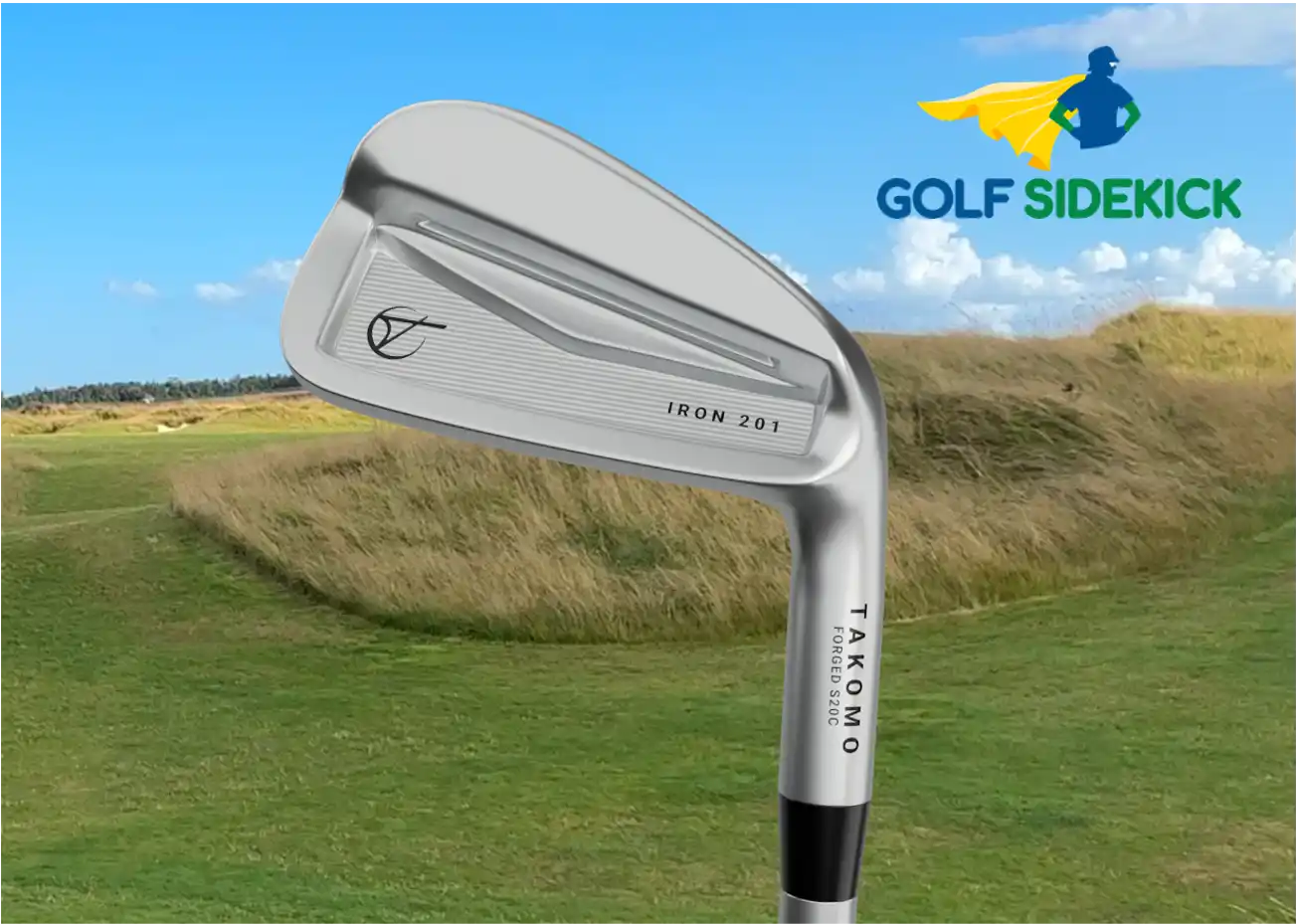
Takomo 201 irons
From $500
Easy to launch:
Distance:
Forgiveness:
Takomo 201 irons are forged cavity back irons specially created for the everyday average amateur in mind. The materials used are buttery soft and this is the first iteration from the new company Takomo. I have been playing Takomo for one year now and they are excellent.
Looks and feel: The Takomo 201 iron is a players cavity back. The feeling I get when hitting the club is softness in the center of the face and when I hit off-center, I felt enough feedback to know I mis-hit the ball. A lot of cavity back clubs can cover up the bad strike and make you feel like it was a very solid hit.
I like that when I miss the center of the face when I hit the Takomo 201s, it doesn't feel like a center-strike. This can help you understand where you are missing - toward the toe, or high in the face or toward the heel.
The offset is small on these irons and they are really a set you can use all the way down to scratch golf.
Performance and accuracy: I hit the 201s with the KBS shafts Takomo fit standard in their irons. I used the stiff and X-stiff KBS Tour shaft. It's unbelievable that you can get a forged players cavity back with a KBS Tour shaft for under $600 per set.
The hard part with cavity back irons is consistent distances off the center strikes. I found the Takomo 201 launched high with a steep drop angle into the green with the stiff shafts, and the distances were very consistent. The ball did not jump off the face and fly much further than my expected distances. That makes them a winner because when you aspire to single figure golf, you need consistent distances on your iron shots.
With the X-stiff shafts, of course, my launch was lower and penetrating, but with enough spin to stop the ball within a yard of my pitch mark.
Conclusion: If budget is your concern, and even if it is not, for the money, you will not find a better iron as a mid handicapper trying to get to low single figures. The consistency of distances and minimal offset make the 201s a must-have.
Highlights
Cons
Most forgiving mid handicap iron
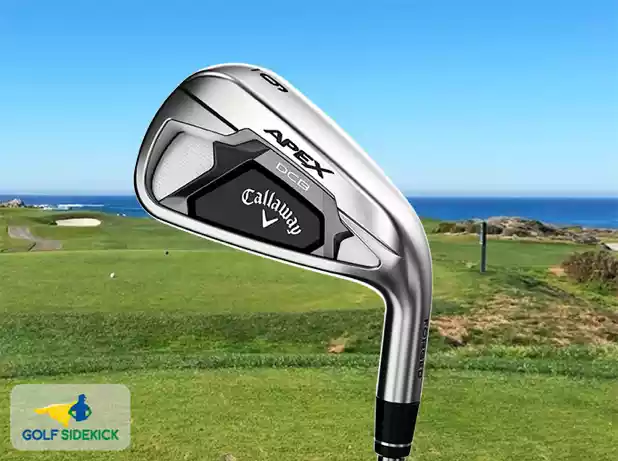
Callaway Apex DCB
Easy to launch:
Distance:
Forgiveness:
Callaway make some of the most forgiving irons available. The Apex DCB is an excellent option for a 10 to 15 handicapper. Ben Hogan Apex irons were always a pure irons and Callaway have integrated the principles of Apex after acquiring Hogan.
Look and feel: The Apex DCB are forged and cavity backed - the DCB stands for Deep Cavity Back - which means they do feel soft and are very forgiving. I noticed that the club heads are very large with a very wide sole and a thick top line.
Accuracy and performance: I noticed a normal amount of offset for a game improvement iron. When I hit the Callaways, I noticed the ball fly very long with a definite bias to move right to left. If you fade the ball, these might be good to straighten out your shots.
The lofts are quite strong in comparison to other models so my flight was low but long. The Flash Cup Face is designed to make the ball go further and I found that it works. I would predict for medium swing speeds, the flight would be perfect but I don't see these irons spinning that much.
I am a mid ball flight golfer and I believe these irons are best for golfers who hit the ball medium to high. If your ball flight is too low, I do not believe these irons will hold the green, unless you roll the ball up to the green.
Conclusion: With stronger lofts, you'll notice a distance increase. While the flight is high in relation to the lofts, be careful if you're a low ball hitter as you may find some shallow landing angles when approaching greens.
Highlights
Cons
Easiest irons to launch
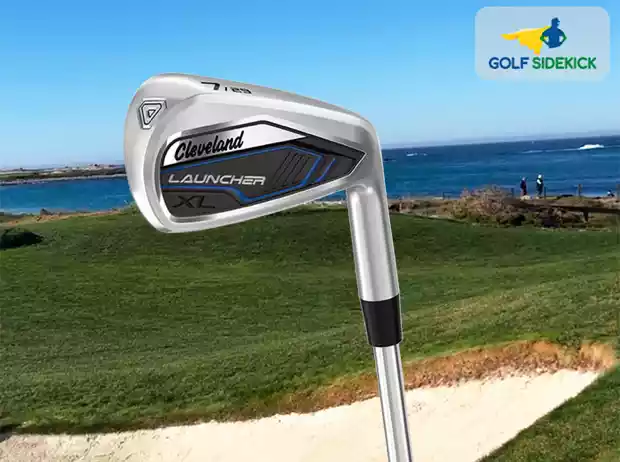
Cleveland Launcher XL irons
Easy to launch:
Distance:
Forgiveness:
The Launcher XL irons are the upgrade to my prior favorites, the near perfect Cleveland Launcher UHX. I've recommended the UHX to 8 friends, who all game them and I will continue to recommend the Launcher iron range for casual golfers, not looking to become scratch golfers.
Look and feel: The Launcher XL are in fact very large club heads. When i place the club head behind the ball, it's obvious that the main purpose of the Launchers is Game Improvement. The club heads are also much longer than most other irons and it's noticeable at address which gives you a lot of surface area to hit the ball with.
Cleveland include the loft on the bottom of the club to help us stop being attached to the number iron you are hitting, and more understanding of the loft that creates that distance. Cleveland is owned by the parent company which owns Srixon, so the Cleveland Launcher irons also feature a V-shaped sole. These clubs did not dig into the ground when I played them.
Accuracy and performance: The extra surface area on the club face means that on off-center hits, you don't get punished as much as a smaller head. There is a progressive design in the iron, which means the 4 iron to 7 iron have a hollow body and the short irons are cavity backs.
Hollow body clubs are designed to reduce the shock and poor performance of mis-hits. I actually kept the 4 iron in my bag with my usual set because it was so much easier to hit. The cavity back short irons are jus as easy to hit.
Distance was much longer than most irons I tried. I was around 10 yards longer on average compared to other models on the list. It is partially because of lower lofts, but Cleveland are known for making irons that travel higher despite lower lofts and that is what I noticed. My friends who play the Launcher models all notice much softer landings on the greens.
Conclusion: Any time a mid handicapper friend asks me for recommendations on new irons, I have to gauge how much golf they play and their expectations. The Cleveland Launcher series is perfect for a golfer who is between a 10 and 18 handicap who plays around 4 times a month without any ambitions of being a scratch golfer.
These irons are fun to hit, and help you enjoy your weekly game of golf more than most sets on this list.
Highlights
Cons
Best irons for a 10 handicap
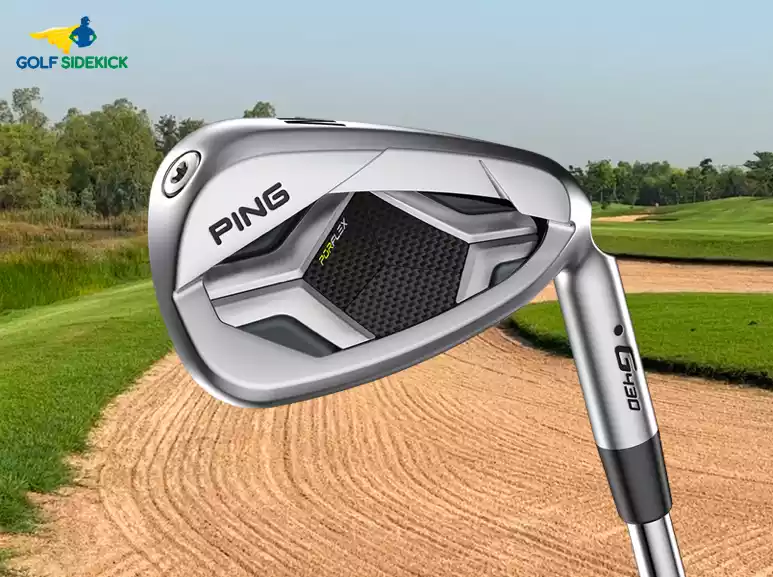
Ping G430 irons
Easy to launch:
Distance:
Forgiveness:
PING irons are synonymous with mid handicap golf and the Ping G430 are the upgrade of the G425 which I rated highly. Changes from G425 are minor, mainly in aesthetic, and performance of the clubs is very similar.
Look and feel: Ping have shortened the heel to toe distance since their last model by creating a more classic shaped head with a thinner top line. That was my main gripe with Ping irons before.
Accuracy and performance:The G430 irons have been designed to behave more like fairway woods by making the face of the club variable in thickness. I noticed that the irons suited more of a sweeping swing as opposed to my typical steep swing which digs into the ground.
I noticed that with a more sweeping swing, the ball pops up into the air much better than when i struck hard down onto the ball. A lot of people who are scared of taking divots will definitely benefit from a set of G430 which allow you to sweep and elevate the ball easily, to help you get on or around the green more often.
PING removed some of the unwanted frequencies of sound by dampening the club behind the face with epoxy. A tungsten screw in the toe creates strong perimeter weighting which makes them very forgiving.
Conclusion: These are the type of mid handicap irons that do not dig into the turf and suit a sweeping style of swing. If you do own the G425, then I would not consider an upgrade but if you have a sweeping swing and are playing thin soled irons, I would suggest picking up a set of G430. If you're in the 12 to 20 handicap range, these are great.
Highlights
Cons
Best intermediate golf irons
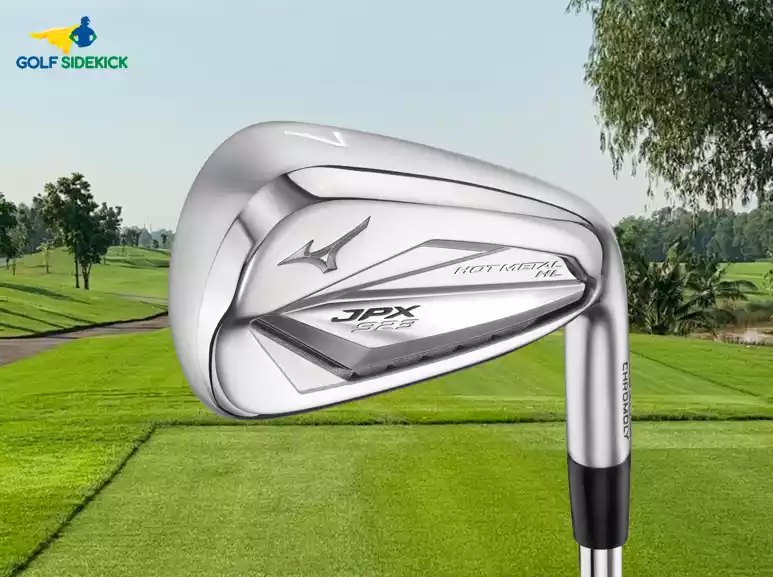
Mizuno JPX 923 Forged
Easy to launch:
Distance:
Forgiveness:
As always, Mizuno forged golf irons are buttery soft and while the new JPX 923 look like a forgiving muscle back , they are actually a cavity back. I was not a fan of the prior JPX 919 and I resold them after 5 rounds but the JPX 923 upgrade improved on them. The 923 version feels higher quality on off-center hits and center hits really feel soft compared to the 919.
Look and feel: The look of the Mizuno JPX923 is similar to the prior JPX919 model and with minimal colors, combined with matte finish, they are easily the best looking iron on the list. They have the look of PGA Tour professional clubs with more forgiving and bigger clubs heads in the long irons moving into more compact shorter irons for precision shots.
There is a very small offset to the clubs for added forgiveness.
Accuracy and performance: The sole of the Mizuno has a more U-shaped appearance for less digging in the turf interaction in a similar way to the Srixon ZX5. In my experience with the clubs, there is almost no difference between them and the Srixon ZX5.
Conclusion: You'll be able to shape the ball both ways with these. There are a lot of mid handicappers who were once single figures who still like a fade or draw into a tight pin. It's fun to shape shots if you can.
For high-mid handicappers, I would suggest the Hot Metal version because the sweet spot has been moved lower in the face specifically to help inconsistent striking.
Highlights
Cons
Best irons for max distance
Cobra Aerojet irons
Easy to launch:
Distance:
Forgiveness:
Cobra irons are definitely mid handicap irons but have a much more mid-sized club heads. The top line when you address the ball is not as chunky as most mid handicap irons. Like with most of the new irons in this category, they've made the club face thinner to promote more ball speed off the flexible face to hit it longer.
Behind the face (Powershell Hot Face first seen in the Radspeed) is the updated Pwr-bridge insert they've created to not only increase distance, and improve the forgiveness, as they always do, but also create a very pleasing sound at impact.
Cobra built the Aerojet irons for 10-20 handicappers specifically and they want these players to be able to hit a 7 iron 155 yards + on the fly with these bad boys.
The head looks really long as well so don't expect a small blade face.
The light weight of the clubs and decreased lofts can help your swing speed and distance enough to prevent you from moving to softer shafts.
The cavity back is 3D printed which some people may find cool and hip, but to be fair, it's aesthetics. I care about the performance Cobra continue to create some of the easiest to hit clubs on the market.
Cobra continues offering the Arccos Caddie GPS system with sensors in the butt of the club, which can be paired with the Cobra Connect feature.
Highlights
Cons
Best irons for a 15 handicap
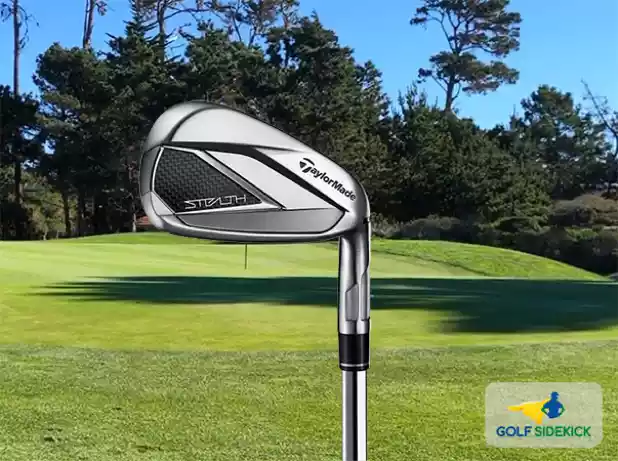
TaylorMade STEALTH irons
Easy to launch:
Distance:
Forgiveness:
TaylorMade have gone the extra mile with the STEALTH irons. They’ve made a thinner and hotter face than their predecessor the SIM z Max for more distance and speed. The biggest difference however is the coloring and club head aesthetics.
I've included the Stealth irons on this list because they are older, you can find them used or new, at a very decent price.
I like TaylorMade irons. I never play them in the player's irons because I prefer Srixon. But I have tried their irons every year since RSi clubs and would rank them up there with Srixon ZX5 range for forgiveness and ease of use. They are SO easy to hit and straighten up your ball flight.
The sweet spot is so wide; it extends over almost the entire groove area so when you mishit the ball it still goes a long way and straight as an arrow. The offset on these irons is a lot more moderate than a lot of mid handicap irons and you don't feel like it's going to hit the ball way left.
TaylorMade's STEALTH set has been specially designed to increase the height of your shots. The short irons get up quickly and mid irons are so forgiving, you'll think they're wedges. With that increase in height, the ball comes down soft on the mid irons to stay on the green and give you more birdie and par putts.
Balls launch high when you hit them and the wide soles help to get under the ball especially in deep rough to get your golf ball moving toward the green and out of the weeds. The heavy perimeter weighting means you can swing it and trust the club to do the work for you. There's no stress wondering what's going to happen next.
TaylorMade has designed the STEALTH iron set with forgiveness in mind. They're extremely accurate golf irons and with the offset hosel, cavity back design, they tick all our boxes. The STEALTH are one of the best mid handicap irons on the market.
One top tip is to get yourself some cavity back wedges if possible if you're going to play these types of irons. it's difficult to go from a cavity back iron to a blade style wedge.
Highlights
Cons
Performance data of mid handicap irons
We tested the irons in the review using a mid handicap golfer with a moderate swing speed (98 mph with the driver). We used a Trackman bay with a 7 iron from each set of irons. You will notice the lofts range from 26.5° to 32° which will make a drastic difference to carry distances.
| Model | Iron | Longest Carry | Shortest Carry | Average Carry | Ave Spin Rate |
| Brand | (Loft) | Yards | Yards | Yards | RPM |
| Takomo 201 | 7 iron (32°) | 166.7 | 154.8 | 159.3 | 5,982 |
| Srixon Zx5 Mk II | 7 iron (31°) | 166.2 | 157.5 | 160.6 | 5,478 |
| Callaway Apex DCB | 7 iron (30°) | 171.2 | 158.3 | 164.7 | 5,340 |
| Cleveland Launcher XL | 7 iron (29°) | 174.5 | 161.8 | 163.1 | 5,089 |
| Ping G430 | 7 iron (29°) | 169.2 | 157.2 | 163.4 | 5,233 |
| Mizuno JPX 923 | 7 iron (30°) | 167.5 | 160.2 | 162.5 | 6,231 |
| Cobra Aerojet | 7 iron (26.5°) | 178.6 | 165.2 | 165.3 | 5,203 |
| TaylorMade Stealth | 7 iron (28°) | 177.3 | 158.4 | 165.1 | 5,657 |
How to select alternative mid handicap irons
My method for selecting irons for mid handicappers
My foolproof method to select golf clubs goes like this:
- Pick the irons that look best to you. How do you like the sole, the top line and the offset? You must love how the irons look immediately. It's very difficult to 'learn to love your irons and when you hit them badly, you'll start to hate them. Pick the irons you LOVE the look of.
- Then how do they when you place the irons look behind the ball? 80% of your decision comes from the first two steps and that is just how powerful the looks are.
- The next 10% of the decision comes down how does the club feel in your hands? Waggle the club, feel the weight and take a swing with no ball. Does it make you feel great?
- Hitting the ball with the irons completes the process. Why only 10%? If you don't like the look of the clubs, the feel of the clubs and the weight of the clubs, it doesn't matter how well you hit them. You'll give up on them in the future. If you love the look, feel and weight, your fitter can make the irons work with your swing to get a good strike.
Hit the golf clubs, preferably outdoors but indoors works too.
- Is the trajectory of the shots low, medium or high? Pick the flight that works for you.
- Does the club make your bad shot worse? If you fade, does the iron make you fade MORE?
- Does the club help to straighten your ball flight?
- Do you need more height, spin or distance? It can be difficult to get all 3 in one set but with a fitting, you can get at least 2 out of your 3 priorities.
- Hit the irons and gauge how many shots you hit from the center of the face. Do you feel a sweet strike more often than any other set?
- If you mis-hit the ball, did you notice big performance changes or minor? Pick what you need from your set.
Other considerations for your iron set
Price
Every large brand name club companies make golf irons for mid handicappers and they price their irons between $750 and $1500.
Boutique brands like Takomo provide high quality clubs at less than $650 per set. Pick the budget you need and understand that boutique brands create clubs in the same factories as the big name manufacturers, but do not spend many on sponsorships and wasteful adverts.
The big name manufacturers price their clubs so high because they sponsor pros and produce tens of thousands of sets at one time, so they need to make sure even if many go unsold, they make a profit.
Type of club head design and material
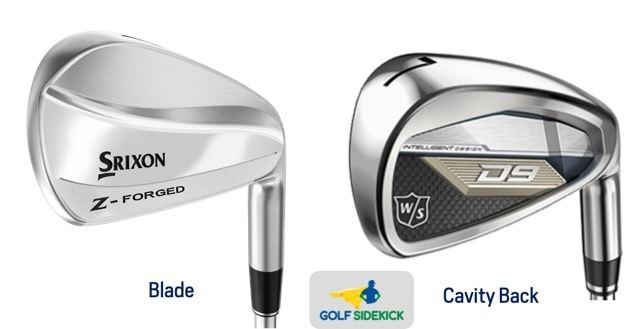
Forged vs Cast irons
1. Forged - the factory stamps the club head out of a single piece of soft steel.
2. Cast - the factory pours liquid metal alloy into a mold and the alloy sets hard.
Muscle back vs cavity back
1. Muscle back blade - Traditional iron heads with most of the steel mass behind the sweet spot, without any cavity back. You may struggle to hit muscle back or blade irons initially but with a lot of practice, you can find the sweet spot. You will receive a lot more feedback on your shots with a blade iron because when you hit it bad, you can feel it.
2. Cavity back - cavity backs are blades without the mass behind the sweet spot. The manufacturers grind out a cavity in the back of the club, to redistribute the excess steel to the perimeter of the iron. The cavity backs are much easier to hit than blades and a recreational mid handicap will enjoy the forgiveness that they offer.
I recommend mid handicap golfers play with cavity back irons, preferably forged because a fitter can bend forged irons to fit your lie angle without breaking the club. The cast iron can be bent only one time. The second attempt cracks the club.
How to pick the shafts for your iron set
Shaft flex dominates as the key factor to consider when you purchase a new set of irons. Which flex you use can change your ball flight drastically.
The actual flex of each shaft will vary between shaft manufacturers because no standard flex ranking scale exists. I consulted Tour fitter and expert club builder, Eric Chong of Impact Golf Malaysia about iron shafts to get his insights.
In his 20 years of fitting clubs Eric finds that:
- Slow swing speeds should use softer flex shafts
- High swing speeds should use a firmer flex shaft
Which flex shaft is right for you?
These flexes are ranked from stiffest (firmest) to softest (most flexible)
- Extra Stiff (X): When you swing your driver faster than 105 mph
- Stiff (S): When your driver swing speed reaches between 90 and 100 mph
- Regular (R): The average golfer will use a regular shaft and is the most popular
- Senior (SR): When your swing speed with the driver dips below 80 mph
- Ladies Flex (L): Ladies generally swing slower than men so there is a specific shaft for them
Eric points out that the shaft you select needs to match your tempo and transition more than your swing speed. He recommends to always get a fitting with a qualified club fitter to ensure you play the perfect equipment for YOU.
You can even change your trajectory, distance and even your ball flight shape with the correct shaft.
How to select the shaft material steel or graphite
Steel or graphite shafts dominate the market. You will see mostly steel shafts in the bags of golfers at the local course.
Graphite shafts are less popular but there is no recommendation from me or Eric on this because it would be irresponsible to recommend without seeing your swing.
Graphite can be a little more expensive but because they are often lighter, they can increase your club head speed.
The best option is to try some clubs with graphite and steel shafts in them. More than likely, you will prefer a steel shaft.
Best irons for a 20 handicap
A 20 handicap should play forgiving irons like deep cavity back irons with lightweight shafts like the XXIO 12 irons.
Best irons for a 10 handicap
The best irons for a 10 handicap are cavity back irons like the Ping G430 irons because a 10 handicaps average score is around 87 so his ball striking needs improvement. A 10 handicap would benefit from the Ping G430 because they provide ample forgiveness which will leave him on the green or around the green with ease.
Best irons for a 15 handicap
The best irons for a 15-handicap are the TaylorMade Stealth irons because they launch high, travel far and are the easiest to hit to break 90. A 15 handicapper averages a score over 90 and he needs most help to hit fewer terrible shots. Stealth irons can help him avoid catastrophic holes on the golf course because they are so forgiving.
When should I switch to blades?
When a golfer can hit the center of the blade club face at least 7 out of 10 times, they can change their irons to blade irons. If you can hit the center of the club face on a blade iron 7 out of 10 times, don't forget about players cavity back irons. Players cavity back irons are slightly more forgiving than blades and perform identically out the sweet spot.
What are best irons for average or intermediate golfers?
In my expert opinion, the best irons for the average or intermediate golfer are the Takomo 201 irons because they are forged, high quality heads with top of the line KBS Tour shafts at a price below $700.
Conclusion
The Srixon ZX5 Mk II iron is my number one pick for mid handicappers because of the high quality shafts and steel used in the heads. The Takomo 201 is a close second because both of these iron sets are made of forged steel, with extremely high quality KBS and Nippon shafts.
The materials used by both companies are top of the line.
Thanks for reading my review and comparison of the best irons for mid handicappers and average golfers in 2024.

